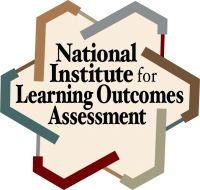Description
This is a series of assignments designed to help students in a biology course for non-majors answer beautiful biological questions (BBQ). Students move through a series of these questions in order to construct an answer to the Big BBQ, How do you distinguish science from pseudoscience? Included are individual and team process assignments through which students explore information and resources related to the BBQs.
Background and Context
Non-Majors Biology (GBIO103) is an introductory level course that fulfills a portion of the science component of the General Education requirement. Students are mostly freshman and sophomores. The General Education program targets learning outcomes that impact how I teach this course. The area of GenEd that my course addresses is called, The Natural World, and the learning outcomes are:
- Describe the methods of inquiry that lead to mathematical truth and scientific knowledge and be able to distinguish science from pseudoscience.
- Use theories and models as unifying principles that help us understand natural phenomena and make predictions.
- Recognize the interdependence of applied research, basic research, and technology, and how they affect society.
- Illustrate the interdependence between developments in science and social and ethical issues.
- Use graphical, symbolic, and numerical methods to analyze, organize, and interpret natural phenomena.
- Discriminate between association and causation, and identify the types of evidence used to establish causation.
- Formulate hypotheses, identify relevant variables, and design experiments to test hypotheses.
- Evaluate the credibility, use, and misuse of scientific and mathematical information in scientific developments and public-policy issues.
My course is tasked with addressing outcomes 1, 4, 7 and 8, shown in bold. The assignment I developed addresses outcomes 1 and 8. I teach this course as a face-to-face course with 2 class times on Mondays and Fridays. This format helps support the mid-week group work needed for teams to develop and post answers to the weekly Beautiful Biological Questions.
Reflections
Over the past 5 or 6 years I have asked my students to answer their own biological question as a final project assignment designed to help them construct knowledge and demonstrate their learning related to locating and using reliable scientific resources. I allowed them to submit a variety of projects–children’s books, songs, brochures, etc–and was amazed by their interest and creativity in this assignment. I was so intrigued by how much this assignment motivated and engaged my students, that I wanted to integrate more of these assignments throughout the semester AND figure out how best to allow the students to demonstrate their learning of a topic or their answer to a beautiful, biological question (BBQ) in a public forum where they had to construct something that would illustrate their knowledge/answer.
Last fall (2013), I attended an open technology conference at Mary Washington University where I met an instructor who teaches digital storytelling by having students create and post Blog entries. The bank of assignments represented the kinds of things my students could use to help construct answers to BBQs in my course. Thus, the final assignment I presented at the NILOA assignment Charette in Indianapolis morphed into a series of assignments where my students constructed answers to BBQs–big ones and small ones. I didn’t lecture and instead I treated my 60-person General Education course like a laboratory. It was the best of times evidenced by the amazing posts my students created on the GBIO103 WordPress site. But it was also the worst of times evidenced by some student resistance and dissatisfaction with the class format. Yes, about half of the class thought I should have just lectured, while the other half thought this was the most amazing learning experience of their young lives. Given this was my first attempt at a lab-based, constructivism approach to learning; I think we all did a very good job.
Over the next few years, I will collect assessment data to determine the impact this new format had on student learning. But from my view, these students learned more than they realized and more than previous cohorts of students. Over the upcoming years I will work on some of the logistics of the process, improve the assignment structure and calendar. But overall, I am satisfied and am hopeful this inspires a few instructors to try something like this in their classes.
- Answer Post Rubric: I don’t have rubrics for the process assignments since these assignments tended to focus on specific questions that were easy to grade as correct or incorrect.
- Assignment Packet: Aside from the classroom discussion of their posts, I provide very little guidance during class on the individual and team process assignments. I treat the class like a laboratory and circulate the room working with each team on the process and helping them work through their questions and issues. I provide written feedback on the process assignments using the comment option in the Wiki I use for the course (pbworks.com). This assignment can be done completely out of class. I choose to integrate the teamwork into class, but that is not necessary. The final answer posts could be submitted via email, posted to a learning management system, or via a Blog (my preference–wordpress.com).
Please select an option
The assignment library and the assignments within are licensed under a Creative Commons Attribution 4.0 International License. By clicking “Ok” you agree to cite each assignment (including modifications), with the provided citation on the assignments downloaded from this site.
OK

